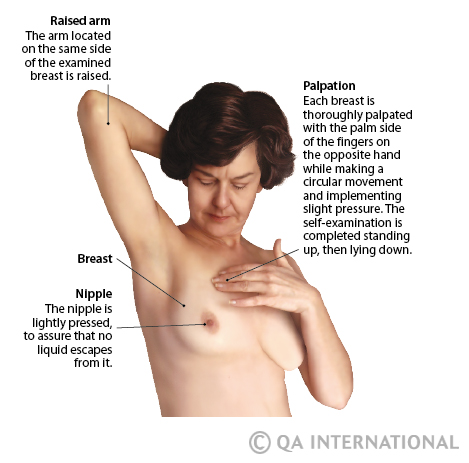
Breast cancer: be well informed for a rosy future!
Breast cancer is a malignant tumor that develops in the mammary glands. These tumors are primarily located in the upper external half of the breast or in the nipple. They affect the left breast more frequently than the right, although in rare cases, they are present in both breasts. Some tumors develop very slowly while others spread quickly to neighboring tissues and create metastases, particularly in young women. Breast cancer constitutes the most common type of cancer and is among the biggest killers of women in the Western world. The regular practice of screening exams, like breast self-exams and mammograms, makes it possible to detect the disease at an early stage, thereby increasing the chances of recovery.
The risk factors of breast cancer
Some factors contribute to an increased risk of developing breast cancer. The most significant are aging and genetic predispositions. In fact, women who have several family members (mother, sister, daughter, etc.) who have suffered from breast cancer, notably before 50 years of age, have a higher risk of developing the disease. This is also the case for women who experience premature puberty, pregnancy later in life, or late menopause, as well as those who have never been pregnant. Taken over the long term, the contraceptive pill slightly promotes the occurrence of breast cancer while some substitutive hormonal treatments for menopause increase the risk in a significant manner. Obesity and a sedentary lifestyle can also increase the risk of cancer.
Types of breast cancer
Close to 95% of breast cancer cases develop in the galactophorous canals (canal carcinoma) or in the mammary lobules (lobular carcinoma). Canal carcinoma is the most common form of breast cancer (80% of cases). Most often, it is an invasive cancer that creates metastases in the axillary (of the axilla) lymph nodes and in the surrounding and distant organs. Less common than canal carcinomas, lobular carcinomas are also becoming less often invasive. Sometimes no symptoms occur and it can affect both breasts.

Mammogram
The X-ray of the mammary gland, called a mammogram, aims to screen for breast cancer or to specify the diagnosis of an anomaly detected by a clinical breast exam. However, approximately 20% of cancers escape detection by this technique. A mammogram should be performed every two years, starting at 50 years of age, or, for women who run a higher risk of breast cancer (family history), starting at 40 years of age or before.

The breast self-examination
The breast self-examination is a screening exam that consists in observing and palpating your own breasts to detect a possible anomaly indicating cancer. A doctor should be notified of any change observed. A change can be a palpable mass, thickening of skin, change in shape, size or color of skin or nipple, spontaneous bloody discharge, bump on the axilla, retraction of the nipple, or permanent redness. From the age of 25 onwards, it is recommended that women conduct a breastself-examination once a month, five to seven days after the beginning of periods, in addition to regular exams by a physician.

Also see:
In the Visual Dictionary:
- "human being" section
In the encyclopedic capsules :
- Cancer: causes and prevention
- The menstrual cycle or the circle of life
- Childbirth
- Menopause
- Adolescence
- Hormones: the body’s chemical messengers
- A balanced diet
- Touch Therapy
- Hygiene and the prevention of infections
In the ikonet games:
- Put it in its place!:




